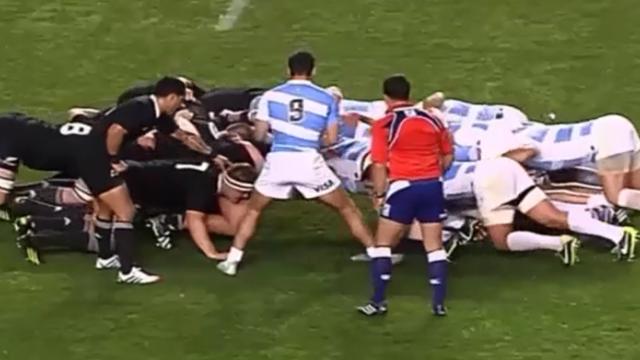Looking back over old Rugby League matches and one of the key features of the game was the scrum; a scrum is called in order to bring the ball back into play in situations where the ball has gone over the touchline, or a player has made a mistake - a knock-on or forward pass.
A scrum is also used in the event that the ball bursts or the referee interfere with the movement of the ball - both of which are almost unheard of in the sport in this day and age. But, scrums have become farcical; no longer are they contested despite this being allowed in the laws of the game.
In fact, they have become so useless that there is almost no point in having them in the sport at all unless something is done.
Evolution of the scrum
Gone are the days of a scrum-half feeding the ball directly into the scrum to be hooked back by the hooker who was situated in the middle of the front row. The ball is now fed through a player's legs in the second row of the scrum while hookers tend to be in the loose forward position. On very few occasions does the opposition contest a scrum and it is even rarer that a team wins a scrum against the head.
While scrums in Rugby League are underwhelming, a Rugby Union style of scrum should not be adopted either; no spectator wants to see a scrum lasting nearly five minutes where the outcome is often a penalty.
I'm talking about quick, effective scrums that favour the attacking team by feeding the ball at an angle, but through the middle rather than a teammate's legs. Make it a contest rather than an excuse to have a rest.
No longer is the scrum used as an attacking outlet either; the idea of a scrum was to give outside backs more room to work moves, but what tends to happen is that the ball is merely shipped to a forward who drives it in - much like the standard play-the-ball. It is disappointing that coaches and players do not use the scrum as a time to experiment with training ground attacking moves. Wouldn't it be great to see something different that surprises the defensive team?
As a Castleford fan, I have seen the Tigers try their hand at a planned move from the scrum several times; their disallowed try against Leeds at the 2017 Magic Weekend where Castleford scored from a scrum in their own 20-meter area for obstruction was a great shame - although it was the correct decision - but it just showed how something inventive could take the opposition by surprise and have the crowd on their feet.
More refined
Rugby League has arguably become more refined. Scrums used to generate into chaos with the ball pinging out of the scrum left, right and centre. Plus, scrums always presented an opportunity for a forward to inflict pain upon his opponents by "sticking one in" whilst the referee and touch judges couldn't see. While Rugby Union props are often ridiculed for their small stature and a rather unflattering physique, their specialist fitness and strength is tailored to their role as scrummagers.
Rugby League props, on the other hand, are often skillful ball-players themselves; the likes of Grant Millington and Liam Watts are not exactly in the mould of the old-fashioned battering rams and re-introducing the contested nature of scrums could well sap the energy of such influential figures.
There's also the issue of speed; scrums in Rugby League take a second to form and break up and then it's on with the game. Would modern crowds tolerate a proper binding and setting off a scrum on top of the extended rest that players already get when a scrum is being formed?
Something needs to be done
Clearly, scrums, as they are now, are a waste of time; any player - rather than just the forwards - can form the scrum in order for the referee to stop the clock, hookers are now usually found at the back of a scrum and the ball gets fed in a way that makes it incredibly difficult for the opponent to win it against the head.
Scrums also seem to be a way for players to earn a breather - which, in this day and age, no one can begrudge them - but they have no other relevance; a simple play-the-ball could easily suffice.
The scrum is a unique part of Rugby League, but it is far from being something to be proud of at present. With a few tweaks though, there is no reason why the scrum could not once more be a major feature in the sport.



